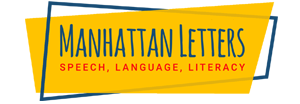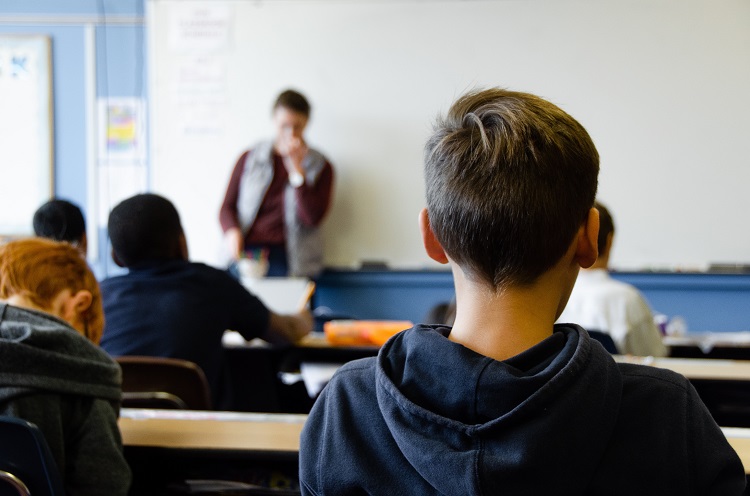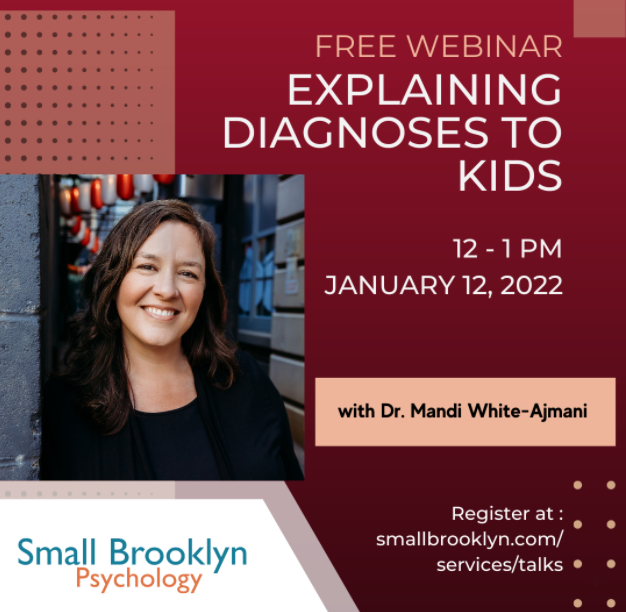
Free Webinar from Small Brooklyn Psychology on how to explain disability to a child on January 12, 12-1 PM EST. Explaining diagnoses to kids. Register now.

Audition Slots still available for December and January’s SuperDville Casting Call. Join our cast and be part of the new wave of SEL video-based learning!!!
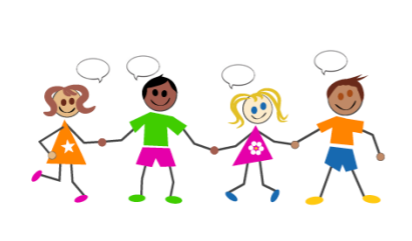
We are studying how intensive this treatment of Childhood Apraxia of Speech affects children’s lips and jaw movement before and after 8 weeks of treatment.
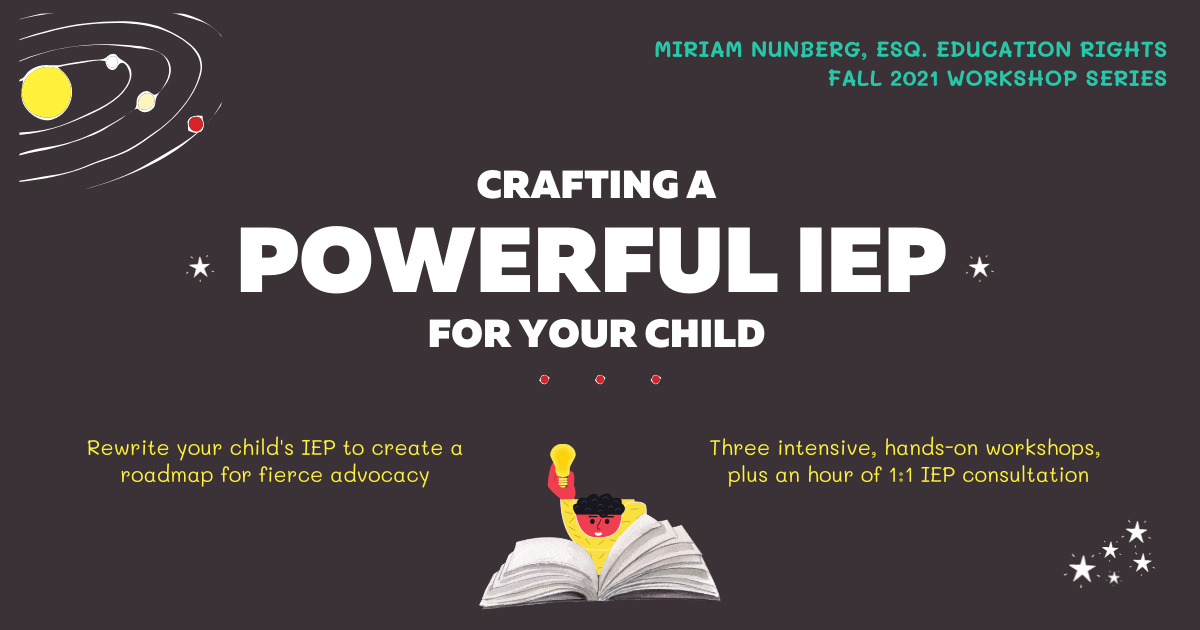
IEP Writing Workshop. New personalized, hands-on workshop series and consultation for parents of students with IEPs! Crafting a Powerful IEP for Your Child.

Craig Selinger, a speech-language pathologist and the owner of Brooklyn Letters, shares best tips for raising bilingual children to optimize success and stay on top of developmental milestones.

With coronavirus cases still rising in the country and many places across the globe, schools and parents turn to alternative learning methods for the coming school year. Over the past months, parents have taken the role of educators following school closures. And as we head into the new school year, parents now have several learning options for their children. This includes traditional homeschooling, remote classrooms, blended learning, and recently, learning pods or pod learning.
However, this presents another problem. Most schools are not prepared to welcome students back in the fall under the varied current options. Meanwhile, parents continue to be overwhelmed as the new school year approaches, which is why many of them have turned to pod learning as one way to mitigate the effects of Covid-19 on education.
What Are Learning Pods?
Simply put, learning pods are small groups of families whose children gather in a shared space or online for supplementary learning. Homeschool families traditionally use pods so children can socialize and interact with other homeschooled students.
Learning pods are typically conducted in one of the participating family’s homes. Instruction often comes in the form of a private tutor or teacher. But sometimes, parents themselves take turns in teaching the children.
While learning pods are not entirely new, it has become one of the solutions adopted by parents who want to make sure the current health crisis does not hurt their children’s academic growth even further.
Why Parents Are Opting for Learning Pods
With school closures forcing students to finish this past school year at home, many families were thrust into remote learning for the first time. And the consensus over this drastic change has not been favorable.
Last spring, many families voiced their struggle with online or remote learning. Apart from the challenge of having to overhaul work and daily schedules, parents often reported this transition to be stressful.
We have seen parents grapple with the challenge of keeping their children engaged in schoolwork while ensuring mental and emotional support. Initial studies have also shown us that even with efforts to beef up remote learning, students still face higher learning loss risks. And although some schools have drawn-up measures to facilitate blended and in-person classes in the fall, safety remains a concern.
But pulling children out of schools entirely also comes with its own set of concerns. For starters, some parents are not confident with their ability to provide adequate academic instruction to their children. And then, there is the issue of socialization, which is crucial in child growth and development. And for most parents, online-based education will not be able to provide enough interaction or replace hands-on instruction. Child care is also another major problem, especially for working parents whose schedules rely on their children’s time at school.
Now that families have to prepare for a full school year during an ongoing pandemic, it is, understandably, making parents worry. As such, the sudden popularity of learning pods comes as no surprise. If the numbers of students are low in each pod, this will be a great solution. And if safety is still a concern, online pods will become increasingly popular.

The Rise of “Pandemic Pods”
With most schools opting to either go fully remote or implement a blended learning system in the fall, learning pods (or “pandemic pods,” in light of the worldwide health crisis) offer students a semblance of what school used to be, all while alleviating parents’ concerns over safety, child care, and academic progress.
Parents rallying for learning pods see it as the best option to limit their children’s exposure to possible health risks. It also allows kids to have the chance to foster friendships and build social skills. And most importantly, learn and have fun in an intimate, more controlled setting.
Learning pods offer an effective way to stem learning loss, guarantee safety, and even a break from parenting responsibilities. However, not all families are as privileged.
Some argue that learning pods widen the educational gap and cause students from lower-income families to fall further behind. And while these concerns are undoubtedly valid, it is also easy to see why pod parents find pod learning appealing.
In this article by Jessica Calarco, associate professor of Sociology at Indiana University-Bloomington, she mentions how learning pods address three critical problems when classes move online. These include:
Ensuring hands-on or in-person instruction and support, which is critical for some students
Giving working parents necessary childcare support during the day
Providing social interaction for children
Calarco presented several suggestions to help level the playing field for all students. But until school and government authorities can implement a more equitable learning method, learning pods will continue to be the most viable option for families who have the means and resources to organize one. Parents will have to rely on themselves.

How Learning Pods Work
One of the advantages of learning pods is that there are no set rules on how it should operate. Everything is determined by the parents who organize it and the common goals they want to achieve. Some learning pods have students enrolled in the same school and attend online or video-based classes together. In other cases, parents take their children out of school and opt for full-time pod learning instead.
Learning pods may have in-person sessions while others limit their classes to online instruction. In some groups, parents hire a tutor or experienced teacher to teach and oversee students. This is arguably one of the best ways to conduct pod learning. Having a teaching professional ensures that your children receive proper guidance and adequate hands-on instruction.
Whether your learning pod aims to supplement school-based curriculum or provide full-time instruction, it is crucial to provide your children with the best support to ensure optimum academic growth.
Fortunately, Themba Tutors and Brooklyn Letters are prepared to offer you tutoring services for all your pod learning needs. We provide in-home and live online pods as well as one-on-one in-home and online tutoring sessions.
Themba Tutors is a New York-based private tutoring company that offers fun, individualized, and dynamic tutoring and coaching services for children and teens. We work one-on-one with students of all ages and provide multidisciplinary, personalized services.
Composed of traveling learning specialists, academic tutors, and executive functioning coaches, Themba Tutors provides in-home and online services in New York City, Nassau and Suffolk Counties, Long Island, Westchester County, Fairfield County, Connecticut, and sections of New Jersey.
Brooklyn Letters offers in-home and online literacy (Orton-Gillingham Approach) and math tutoring services and speech, language, and feeding therapies in the New York City metro area seven days a week.
Our private-pay online and doorstep speech-language feeding therapy, reading services (Orton Gillingham, Wilson, etc.), and math tutoring for all ages and for all skills are individualized and adapted based on your child’s and peers’ needs.
We offer the following services:
- Online Services
- Orton Gillingham Approach
- Writing and Speaking Intervention
- Writing Intervention
- Comprehension – Listening and Reading Intervention
- Reading Comprehension Tutoring
- Decoding and Encoding
- Reading Fluency Services
- Spelling Intervention
- Vocabulary Intervention
- Math Tutoring
Get in touch with us today at:
Themba Tutors
(917) 382-8641 / (201) 831-9848
Brooklyn Letters
(347) 394-3485
(917) 426-8880
Text: (917) 426-8880
Download our Free How to Get a Dyslexia Diagnosis for Your Child pamphlet here.
 Dyslexia is one of the most common learning disabilities in children and adults. It affects 20 percent of the population and accounts for 80 to 90 percent of those with learning disabilities. As with all learning disabilities, early detection and intervention are crucial. Particularly in stemming further learning difficulties in later life. If you’re worried that your child may have dyslexia, below is a guide on what signs to look out for and how to get a dyslexia diagnosis.
Dyslexia is one of the most common learning disabilities in children and adults. It affects 20 percent of the population and accounts for 80 to 90 percent of those with learning disabilities. As with all learning disabilities, early detection and intervention are crucial. Particularly in stemming further learning difficulties in later life. If you’re worried that your child may have dyslexia, below is a guide on what signs to look out for and how to get a dyslexia diagnosis.
Discover how you can explain ADHD in a way that’s easy for the child to understand, and accurately represents their amazing brain. Check out this Handout: Kid-Friendly Assessment Summary to help kids understand their amazing brains.
What is Dyslexia?
The International Dyslexia Association defines dyslexia as a specific and unexpected learning disability that is neurobiological in origin. Individuals with dyslexia primarily have difficulty in phonological processing. Phonology is an underlying skill that facilitates both learning how to decode and spell. Students with dyslexia struggle with isolating the sounds in words, matching sounds with letters, and blending sounds into words. The visual magnocellular system is responsible for timing visual events when reading. In dyslexics, the development of the visual magnocellular system is impaired: development of the magnocellular layers of the dyslexic lateral geniculate nucleus (LGN) is abnormal; their motion sensitivity is reduced; many dyslexics show unsteady binocular fixation; hence poor visual localization, particularly on the left side (left neglect). However, this visual phenomenon does not explain dyslexia.
In other words, these students have problems “cracking the code.” This means arbitrary written symbols (called orthography) are not automatically processed as well as their peers who have cracked the code with more automaticity do. As a result, an individual with dyslexia will find it difficult to sound out words and show poor spelling and decoding abilities.
When left unaddressed, dyslexia can also lead to problems in reading fluency. If you aren’t reading fluently, you will be at risk for having reading comprehension difficulties and will most likely avoid reading since it’s an unpleasant experience. Lack of practice reading means less exposure to vocabulary and reduced learning background knowledge. In short, without proper intervention, dyslexia leads to a foundational literacy issue, which then causes downstream issues.
For the most part, however, what exactly causes dyslexia is still unknown. We do know there is a genetic link; studies show that children with a family history of dyslexia or other learning disabilities are more susceptible. There are also other risk factors to consider, such as low birth weight, premature birth, and exposure to harmful substances (drugs, nicotine, alcohol) during pregnancy.
Common Signs of Dyslexia
Dyslexia can occur at all levels of intelligence. Children who struggle with dyslexia can often excel in other areas of learning and creative thinking. This is arguably one of the reasons why early signs of dyslexia are easy to overlook, especially in bright students. These students can easily compensate for this sometimes “invisible” learning disability, which makes knowing when and how to get a dyslexia diagnosis all the more necessary.
Typically, dyslexia is detected once a child enters school and starts learning to read. But younger children may also show symptoms that hint at a learning problem. Here are some early signs of dyslexia in children and teens to watch out for from The Mayo Clinic:
Early/Pre-School Years
- Late talking
- Slow to learn new words
- Often reverses and confuses word sounds, especially those that sound alike
- Difficulty naming letters, numbers, colors, and even recognizing letters in their own name
- Struggles to learn nursery rhymes, understand rhyming patterns, or play rhyming games
Elementary Years
- Reads below the expected level for their age (slow or inaccurate reading)
- Struggles with understanding and processing what they hear
- Struggles to find the right words or form answers and often opts to substitute words
- Difficulty in remembering the sequence of events or things
- Difficulty in distinguishing similarities and differences in letters and words
- Unable to sound out the pronunciation of new words and struggles with spelling
- Takes a long time to complete reading or writing exercises and shies away from reading tasks
Teens and Adults
- Problems with reading, often leaving out short words or parts of longer words
- Struggles with spelling and writing
- Difficulty pronouncing expected or familiar words or names
- Takes a long time to complete tasks that involve reading and writing or avoids reading activities
- Struggles with “getting” jokes, puns, or expressions with meanings that are not readily obvious
- Difficulty grasping a second language and telling or summarizing a story
- Struggles with memorizing or doing math problems
When and How to Get a Dyslexia Diagnosis
Dyslexia becomes easier to spot once a child enters kindergarten or first grade. This is because children with dyslexia often struggle with understanding basic reading skills, so they will noticeably fall behind their peers.
Your child’s primary teacher will hopefully notify you if he or she is falling behind reading benchmarks. They may suggest an assessment and offer assistance on how to get a dyslexia diagnosis for your child. However, school districts and schools use their own metrics to determine what’s expected in terms of learning literacy. What parents don’t know is that many of these popular metrics are not researched-backed (This is another topic to be discussed at a later point). It is currently thought that developmental dyslexia can be viewed as the result of the effects of single deficits or multiple deficits.
A licensed clinical psychologist (ideally, a neuropsychologist) performs the testing for dyslexia on a child. Likewise, a licensed clinical psychologist can also work with a licensed speech language therapist, who can also collect necessary and relevant data (see below). Meanwhile, an occupational therapist can evaluate fine motor and visual spatial skills.
According to the International Dyslexia Association, dyslexia evaluation should consider the following factors:
- Background information from parents and teachers
- Oral language skills
- Word recognition
- Decoding
- Spelling
- Phonological processing
- Fluency skills
- Reading comprehension
- Vocabulary
- Graphomotor skills
Moreover, a child or adult should undergo a neuropsychological evaluation to get a closer look at brain functions. This type of test can measure attention span, memory, and language skills. It can help determine the reasons a child is struggling in school and help you plan an intervention. And like any type of learning issue, clinical psychologists can also rule in or out co-morbity since many learning issues are not “pure” in nature.
Why Diagnosing Dyslexia is Important
When left unchecked, dyslexia and other learning disabilities can persist well into adulthood. Without any support, children with dyslexia can experience frustration and learning blocks that may ultimately hamper their learning growth and development.
In many cases, not knowing how to get a dyslexia diagnosis and ignoring the signs of learning disabilities can lead to moodiness and chronic stress, expose children as targets for bullying, and take a toll on the child’s self-esteem. These outcomes may worsen as a child gets older and cause further mental, academic, and career-related problems.
Having a formal evaluation and diagnosis also allows your child to qualify for their school’s special services and Individualized Education Program or IEP. In the United States, all students are eligible for IEPs. Entering your child into a specialized program gives you access to accommodations and modifications in your child’s academic path and goals.
Modifications make changes to what your child is taught in school and adjust expectations in what he is supposed to achieve. An example of this would be giving a different set of homework or grading using a different standard. Modifications are made on the child’s IEP.
Meanwhile, accommodations are steps taken by the school to allow children with dyslexia to keep pace with their peers. This may include:
- Access to taped lectures and audio versions of learning materials
- Use of text-to-speech software to help with writing
- Extra time on tests and writing and reading exercises
- No foreign language requirement
- Access to vocabulary lists and new concepts ahead of time
- Alternative books with similar content in the student’s reading level
- Read-aloud exemptions
- Grading students on mastery of content instead of spelling or reading fluency
How to Best Teach a Child with Dyslexia
Finding out how to get a dyslexia diagnosis is only the first step in providing support for your child. Hence, your next goal should focus on finding out the best and most effective way for your child to learn.
But before anything else, it is important to understand that dyslexia is neither a disease nor a physical condition. It is a lifelong learning disability, which a timely diagnosis and the right intervention and teaching approach can successfully manage and correct.
Because dyslexia affects not only a child’s ability to read but also write and spell, it requires a multisensory structured language education (MSLE) approach.
One of the pioneers of this type of teaching method is the Orton-Gillingham approach. Its goal is to create a multisensory learning environment for individuals struggling with reading, writing, spelling, or a combination of all three. The Orton-Gillingham Approach uses sight, hearing, touch, and awareness of motion to assist the child in improving reading and other literacy skills.
How to Support a Child with Dyslexia at Home
While schools play a big role in a child’s success over dyslexia, at-home learning and support are just as important. Some of the most important steps you can take as a parent are:
Staying on top of your child’s IEP. Knowing how to get a dyslexia diagnosis and making sure your child receives a school’s IEP is crucial. But your job doesn’t stop there. It is just as important to keep communication lines open with your child’s educators. This is key to ensure the student is making progress and to figure out how you may be able to provide more help.
Reading with your child as often and as consistently as possible. It may be a challenge to get children to hunker down and finish a book, so pick fun reading materials like comic books, graphic novels, or choose-your-own-adventure books that make reading less of a chore. Emphasize on teaching phonics, and allow your child to practice reading without the pressure of being criticized or graded.
Taking advantage of technology. These days, there is an app or software for everything. Including dyslexia learning needs. Think text-to-speech, reading assistant apps, and spell-checkers.
Seeking the help of professionals. Finding a professional with Orton-Gillingham training (at least 40 hours worth), or even a speech-language pathologist with training in literacy, is the best way to provide further support for your child. For your child to succeed, it’s crucial to work with a professional that has a keen understanding of his or her needs and delivers a custom teaching approach.
Brooklyn Letters is a New York-based private speech-language therapy and tutoring company fully committed to providing fun, individualized, and dynamic tutoring, coaching, and therapy sessions for children and teens. We treat all kinds of speech and language delays and learning difficulties, specializing in evaluating and treating babies through adolescents.
Our services include:
- Online Services
- Deaf Hard of Hearing
- Math Tutoring (K-5)
- Orton Gillingham Approach
- Wilson Reading Tutor
- Special Education Itinerant Teacher – SEIT
- Writing & Speaking Intervention
- Writing Intervention
- Comprehension – Listening and Reading Intervention
- Reading Comprehension Tutoring
- Decoding and Encoding
- Reading Fluency Services
- Spelling Intervention
- Vocabulary Intervention
- Handwriting Tutoring
————-
Do you want to learn more about dyslexia?
Here is a roundtable NYC discussion on dyslexia presented by a neuropsychologist, an educational attorney, a special needs advocate, and a head of a school specializing in teaching dyslexia.
Manhattan Letters offers in-home and online literacy (Orton-Gillingham Approach), math tutoring services, and speech, language, and feeding therapies in the New York City metro area seven days a week.
Get in touch with Brooklyn Letters at:
Phone: (347) -394-3485
Text: (917) 426-8880
Email: [email protected]
We are ready to help you right now!

Image Credit: Black Lives Matter
Black Lives Matter is a global human rights movement fighting against racial injustice and systematic racism towards black people. There are many ways to support Black Lives Matter from educating ourselves on how to be actively anti-racist to signing petitions, making donations and more.
Below we have put together a list of resources and information related to the the Black Lives Matter movement. You can learn more about the movement and find ways you can also support Black Lives Matter.
RESOURCES
- Trevor Noah on George Floyd and the Minneapolis protests
- Assessing our hidden biases is the first step to awareness
- Here is a reading list of 31 Children’s Books to support conversations on race and racism for your classrooms
SUMMER READING (FOR ADULTS) TO UNDERSTAND MODERN RACISM:
- The Color of Law: A Forgotten History of How Our Government Segregated America by Richard Rothstein
- They Called Us Enemy by George Takei, Justin Eisinger, and Steven Scott
- Between the World and Me by Ta-Nehisi Coates
- Born a Crime by Trevor Noah
PETITIONS
DONATIONS
- Donate to help get protestors out of jail
- Donate to Black Lives Matter
- Donate to the George Floyd Fund
- Donate to the Ahmaud Arberry Fund
- Donate to Black Visions Collective
- Donate to Minnesota Freedom Fund
- Donate to National Bail Fund
- Donate to Bay Area Bail Fund
- Donate to the Bail Project
- Donate to Reclaim the Block
STAY IN THE LOOP FOR NYC PROTESTS
SUPPORT BLACK-OWNED RESTAURANTS
Online Speech Language Therapy, Coaching and Online Tutoring Services
Brooklyn Letters and its branches in Manhattan, Queens, Staten Island, Long Island will be offering all speech language and feeding therapy, coaching and literacy and math tutoring services online seven days a week from 8:00 a.m. to 9:00 p.m.
It is now necessary for all speech language therapy and tutoring to be done remotely due to the pandemic. The transition from physical classroom to a virtual classroom has been a tenuous one. Children are trying to get used to online learning while parents are attempting to balance their own stresses working from home. Educators have also been scrambling to set up the best possible classrooms online for their students.
Brooklyn Letters team of highly professional and talented speech language pathologists and learning specialists have been working around the clock to make the transition from one-to-one services to remote services a seamless experience. There have been new technologies to implement, many lessons and activities to download, and creative plans to assimilate for families. There have been glitches, which is to be expected. However, one of our learning specialists, Lauren T., was kind enough to share her personal experience with us of preparing and administering her first couple of remote tutoring sessions with a 6 year old. She has been tutoring this child in one-to-one sessions for weak phonological awareness, assistance in understanding the concepts of syllables, rhyme, and onset/rime, and boosting her reading level.
Lauren shares remote tutoring tips:
In terms of organization, I followed a tip from someone on Facebook and created a folder just for that student and copied the documents I would need into it. Then I left it open in the background for easy access. Thus, if I closed something by mistake, I could easily reopen it.
Shared the Adobe pdf window through Zoom. Annotate in Zoom lets me spotlight the line of text I want her to focus on.
For this session I used only SMART Notebook. I had to create a few new SMART files to duplicate PPT files. SMART Notebook (the free version) has fewer design flourishes than PPT (i.e. could not give tokens a shadow and dimension unless I inserted a picture that already had shadow and dimension), but students can easily click and move things with a minimum of distracting activity. For instance, if a student clicks on a token in PPT, a bright box appears around it, and there is a lag when the image is moved. In SMART, it is a more subtle black box, and there was only the slightest lag. I put all the files I would need with movable pieces into one file: token boards, letter board, picture sort, and words to arrange into a sentence. Then I just scrolled to the correct page when needed.
At our next session I played a phonics board game with her. The game pieces were movable. For the die, I downloaded a cute app onto my phone; I would “roll” the die for her. I did not want her using a physical dice, which would end up on the floor in a corner.
On Zoom, I am sharing the SMART Notebook screen, giving her control of the mouse so she can move the game pieces. (I also have control of the mouse.) She is off-screen, maybe fetching her marker. I asked her to spell the words for the pictures either of us landed on. I created this game using free clip art from the internet. The game board is something I found for free on the net — it comes blank, with just the colored circles. She had a good time — had a breakthrough with phonemic awareness during an earlier activity.
The HUE document camera worked well for displaying word cards and decodable text. I liked that the student could see my hands and fingers as she is used to, rather than relying on the mouse pointer to draw her attention to certain words. As far as I know, the image was clear on the student’s end.
There were some problems with getting the student oriented correctly to the camera on her parents’ large computer screen. When I asked her to show me what she wrote on her wipe-off board, she put it in front of my image on the screen rather than the camera. And lighting made it hard for me to see when the board was in range. I had her tell me the letters she had written. When I meet again, I will ask her parents to show her where the camera is. Also, being 6, she was too short for the chair, even at its highest setting. Next time I will have her sit on pillows to get higher. Also, being 6, she tended to drop the marker and had to scramble down from the chair to fetch it. She was out of my view, but for the most part climbed back up right away.
With an explicit lesson plan and everything open and ready to go, I was able to get to every part of the lesson and keep her engaged. It does take a lot of behind-the-scenes work to get remote sessions up and running. However, the only tools the families need to have are a computer with internet access that contains a camera, microphone, and a mouse (or touchscreen) to access the Zoom meeting. Zoom does not require an account or an app. Accommodations can also be made for tablets. Additionally, a dry erase board or paper with pencils or markers is necessary.
Other tips: I arranged lamps on my desk so that bright light was reflected off the wall onto my face. I also wore bright clothing and some lipstick. (Men should try this with tinted lip balm!) I work on a laptop, so I set the laptop on top of a stack of books so that the camera would be level with my face. This way I was not looking down all the time. The background was a curtain I arranged behind me rather than the top of the back wall. I did not have my headset, so I used the microphone on my webcam. This meant I was always talking loudly, which felt unnatural. For the next lesson, I will use my headset, which I hope will mean my vocal communication will feel more intimate.
The student really enjoyed the sessions, and we will continue to meet in this manner. In general, the parents are overwhelmeddD by the heavy workload the school expects of the student (which I imagine is a common emotion among parents at this time), and also with managing the schedule to set up their other child with his twice-daily Zoom meetings and still have the time and space to conduct their own work they are doing at home. They are working on a schedule that fits their family.
Some parents are reluctant to give remote therapy or tutoring a try because their child is not yet adjusting well to the online learning environment with their schools. Science shows, and we have experienced this as well at Brooklyn Letters with our sessions with children, that there is such a different dynamic in instructing in a group setting versus a one-to-one setting. We encourage parents to contact us for assistance and are even offering a free 30 minute remote session so that parents can see how it will all work.
Not only do we offer tutoring for children with learning difficulties, disabilities, and literacy and math struggles, but we also offer a menu of personalized assistance. We can do student check-ins once or twice a day or a couple of times a week, organize work to be completed and prepare plans, help with homework, and even coach parents as to how to guide their children through these transitions. Parents can speak to a therapist or learning specialist for free to share their needs, and the professional will prepare a plan to offer. We understand that not every family situation is the same and, likewise, children's needs vary. Therefore, we will create just the right, individualized plan for each family's needs.
Our Director, Nicole, and Founder and CEO, Craig, are also available to speak with parents and answer any questions.
Written by Brooklyn Letters
Need an online speech language therapy, reading, writing, and math tutoring services
We are offering remote speech language therapy, tutoring services, and additional remote services seven days a week!
(917) 426-8880 & [email protected]
(we respond to email right away!).
The Demo Blog
Our Manhattan Upper West Side, West Village, Union Square, TriBeCa, SOHO, Chelsea, Battery Park, Financial District, East Village, Lower East Side, Midtown, Murray Hill, Kips Bay, Gramercy Park speech-language therapists (speech-language pathologists) work with babies, toddlers, preschoolers, & school-aged children. Our speech therapy includes articulation, enunciation, oral motor, & phonology. Our language therapy targets expressive and receptive language goals.
Our Manhattan speech-language therapy services include:
- Pronunciation (all ages)
- Early Childhood Expressive Language
- School Age Expressive Language
- Tongue Thrust Therapy
- Autism Spectrum Disorder (PDD, Aspergers, etc.)
- Stuttering
- Listening Difficulties (auditory and language processing)
- Augmentative and Alternative Therapy (AAC)
As well as academic support:
- Writing & Speaking Intervention
- Writing Intervention
- Comprehension- Listening & Reading Intervention
- Reading Comprehension Tutoring
- Decoding and Encoding
- Reading Fluency Services
- Spelling Intervention
- Vocabulary Intervention
We work with all ages includes those with speech and language delays, disorders, autism spectrum, language-based learning issues, and more!
We travel to your home!
Please reach out to us at
347-394-3485
Children are able to receive a speech-language evaluation for $20 and can participate in a study where they are asked to produce
 Brooklyn Letters is now offering Speech, Language, Feeding Therapy and Specialized Learning Services in Nassau & Suffolk Counties, Long Island.
Brooklyn Letters is now offering Speech, Language, Feeding Therapy and Specialized Learning Services in Nassau & Suffolk Counties, Long Island.
Variety is our middle name. We treat all kinds of speech and language delays and learning difficulties. Our specialties include evaluating and treating babies through adolescents. Other areas we cover are:
Pronunciation (all ages)
Early Childhood Expressive Language
School Age Expressive Language
Tongue Thrust Therapy
Autism Spectrum Disorder (PDD, Aspergers, etc.)
Social Skills
Stuttering
Listening Difficulties (auditory and language processing)
Picky Eaters and Early Childhood Feeding Delays
Voice (Dysphonia) Therapy
Augmentative and Alternative Therapy (AAC)
Our language therapists and reading interventionists provide specialized intervention, including an Orton Gillingham multi-sensory approach to literacy, remediation, and alternative learning services for students with learning differences (preschoolers through adolescents) including those with language processing difficulties and students with dyslexia; we also work with home-schooled families.
Common Core Tutoring
Orton Gillingham Approach
Writing & Speaking Intervention
Writing Intervention
Comprehension- Listening & Reading Intervention
Reading Comprehension Tutoring
Decoding and Encoding
Reading Fluency Services
Spelling Intervention
Vocabulary Intervention
We are like the Olympic coaches of language arts; we specialize in the complete literacy remediation package: reading, writing, speaking, and listening services for preschoolers to adults. We are experienced with the following, expressive and receptive language disorders (language processing), executive functioning issues, autism spectrum, e.g. Asperger's, pervasive developmental disorder (PDD-NOS), central auditory processing disorder, language based learning disabilities (e.g. dyslexia), reading comprehension difficulties, and expressive writing disorders.
We serve the following locations in Nassau County:
Carle Place
East Williston
Floral Park
Franklin Square
Garden City
Garden City Park
Great Neck
Jericho
Levittown
Manhasset
Manhasset Hills
Massapequa
Merrick
Mineola
N. Merrick
New Hyde Park
Port Washington,
Roslyn
Stewart Manor
Wantagh
West Hempstead
Westbury
Old Westbury
Valley Stream
We serve the following locations in Suffolk County:
Bayport
Bluepoint
Bohemia
Centereach
East Islip
Farmingville
Hauppague
Medford
Nesconset
Oakdale
Patchogue
Port Jefferson
Port Jefferson Station
Sayville
Selden
Setauket
Smithtown
South Setauket
St. James
West Sayville
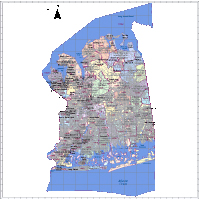 Brooklyn Letters is now offering Speech, Language, Feeding Therapy and Specialized Learning Services in Nassau County, Long Island.
Brooklyn Letters is now offering Speech, Language, Feeding Therapy and Specialized Learning Services in Nassau County, Long Island.
Variety is our middle name. We treat all kinds of speech and language delays and learning difficulties. Our specialties include evaluating and treating babies through adolescents. Other areas we cover are:
Pronunciation (all ages)
Early Childhood Expressive Language
School Age Expressive Language
Tongue Thrust Therapy
Autism Spectrum Disorder (PDD, Aspergers, etc.)
Social Skills
Stuttering
Listening Difficulties (auditory and language processing)
Picky Eaters and Early Childhood Feeding Delays
Voice (Dysphonia) Therapy
Augmentative and Alternative Therapy (AAC)
Our language therapists and reading interventionists provide specialized intervention, including an Orton Gillingham multi-sensory approach to literacy, remediation, and alternative learning services for students with learning differences (preschoolers through adolescents) including those with language processing difficulties and students with dyslexia; we also work with home-schooled families.
Common Core Tutoring
Orton Gillingham Approach
Writing & Speaking Intervention
Writing Intervention
Comprehension- Listening & Reading Intervention
Reading Comprehension Tutoring
Decoding and Encoding
Reading Fluency Services
Spelling Intervention
Vocabulary Intervention
We are like the Olympic coaches of language arts; we specialize in the complete literacy remediation package: reading, writing, speaking, and listening services for preschoolers to adults. We are experienced with the following, expressive and receptive language disorders (language processing), executive functioning issues, autism spectrum, e.g. Asperger's, pervasive developmental disorder (PDD-NOS), central auditory processing disorder, language based learning disabilities (e.g. dyslexia), reading comprehension difficulties, and expressive writing disorders.
We serve the following locations in Nassau County:
Glen Cove
Long Beach
Town of Hempstead
Town of North Hempstead
Town of Oyster Bay
Atlantic Beach
Bellerose
Cedarhurst
East Rockaway
Floral Park
Freeport
Garden City
Hempstead
Hewlett Bay Park
Hewlett Harbor
Hewlett Neck
Island Park
Lawrence
Lynbrook
Malverne
Rockville Centre
South Floral Park
Stewart Manor
Valley Stream
Woodsburgh
Baldwin
Barnum Island
Bay Park
Bellerose Terrace
Bellmore
East Atlantic Beach
East Meadow
Elmont
Franklin Square
Garden City South
Harbor Isle
Hewlett
Inwood
Levittown
Lido Beach
Merrick
North Bellmore
North Merrick
North Valley Stream
Oceanside
Point Lookout
Roosevelt
Salisbury
Seaford
South Hempstead
South Valley Stream
Uniondale
Wantagh
West Hempstead
Woodmere
North Woodmere
Baldwin Harbor
East Garden City
Lakeview
Malverne Park Oaks
North Lynbrook
North Wantagh
Baxter Estates
East Hills
East Williston
Flower Hill
Great Neck
Great Neck Estates
Great Neck Plaza
Kensington
Kings Point
Lake Success
Manorhaven
Mineola
Munsey Park
New Hyde Park
North Hills
Old Westbury
Plandome
Plandome Heights
Plandome Manor
Port Washington North
Roslyn
Roslyn Estates
Roslyn Harbor
Russell Gardens
Saddle Rock
Sands Point
Thomaston
Westbury
Williston Park
Albertson
Carle Place
Garden City Park
Great Neck Gardens
Greenvale
Harbor Hills
Herricks
Lakeville Estates
Manhasset
Manhasset Hills
New Cassel
North New Hyde Park
Port Washington
Roslyn Heights
Saddle Rock Estates
Searingtown
University Gardens
Bayville
Brookville
Centre Island
Cove Neck
Farmingdale
Lattingtown
Laurel Hollow
Massapequa Park
Matinecock
Mill Neck
Muttontown
Old Brookville
Oyster Bay Cove
Sea Cliff
Upper Brookville
Bethpage
East Massapequa
East Norwich
Glen Head
Glenwood Landing
Hicksville
Jericho
Locust Valley
Massapequa
North Massapequa
Old Bethpage
Oyster Bay
Plainedge
Plainview
South Farmingdale
Syosset
Woodbury
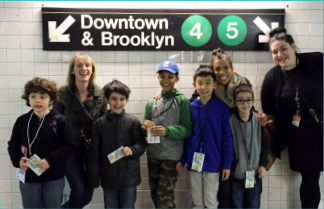
Subway Sleuths is a 10-week program for students with autism or other social or communication disorders who love trains, are able to talk to peers about this shared
